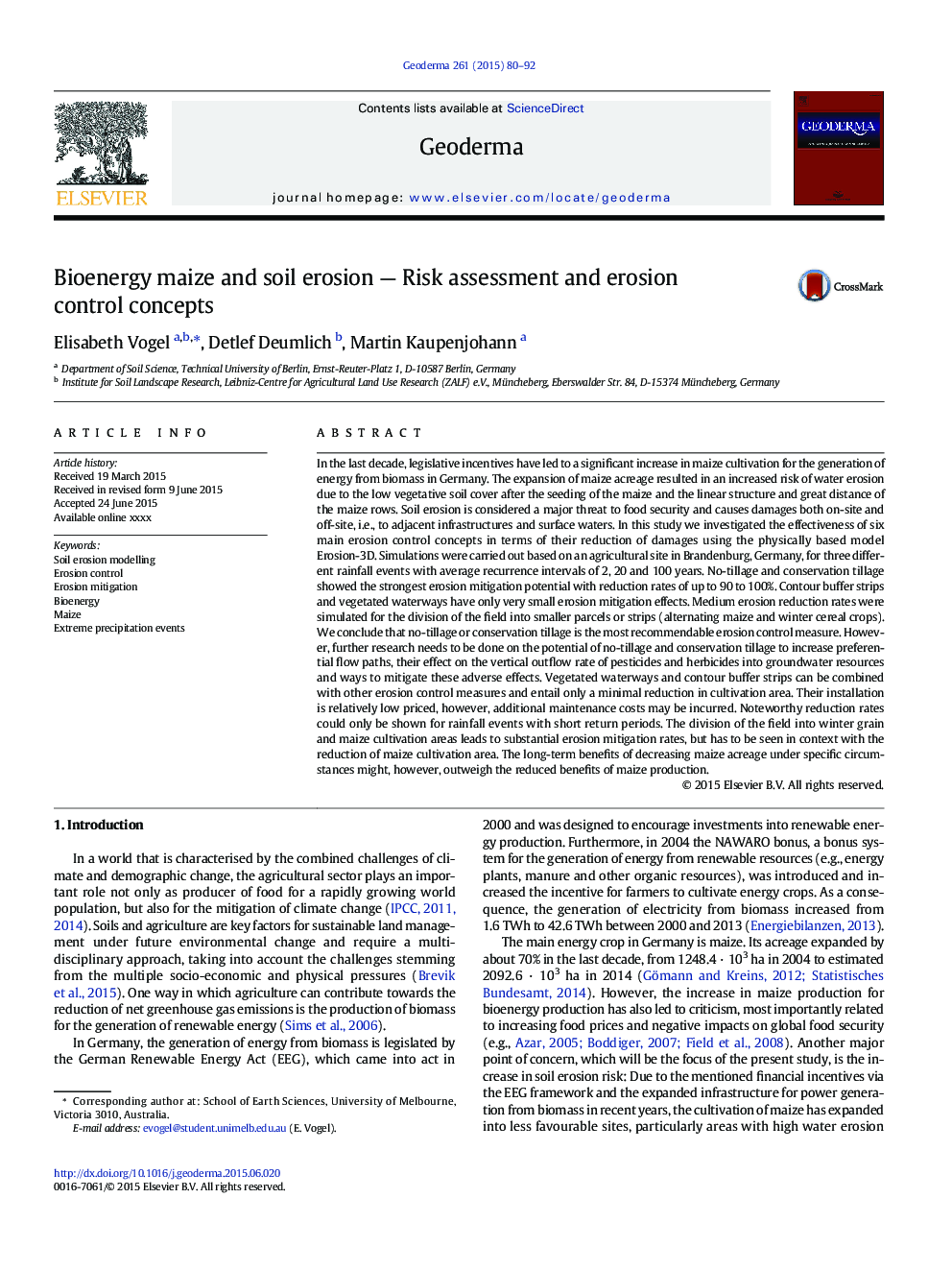| کد مقاله | کد نشریه | سال انتشار | مقاله انگلیسی | نسخه تمام متن |
|---|---|---|---|---|
| 6408400 | 1629455 | 2016 | 13 صفحه PDF | دانلود رایگان |
عنوان انگلیسی مقاله ISI
Bioenergy maize and soil erosion - Risk assessment and erosion control concepts
ترجمه فارسی عنوان
ذرت بیولوژیکی و فرسایش خاک - ارزیابی ریسک و مفاهیم کنترل فرسایش
دانلود مقاله + سفارش ترجمه
دانلود مقاله ISI انگلیسی
رایگان برای ایرانیان
کلمات کلیدی
مدل سازی فرسایش خاک، کنترل فرسایش، کاهش فرسایش، بیو انرژی، ذرت، وقایع بارش شدید،
موضوعات مرتبط
مهندسی و علوم پایه
علوم زمین و سیارات
فرآیندهای سطح زمین
چکیده انگلیسی
In the last decade, legislative incentives have led to a significant increase in maize cultivation for the generation of energy from biomass in Germany. The expansion of maize acreage resulted in an increased risk of water erosion due to the low vegetative soil cover after the seeding of the maize and the linear structure and great distance of the maize rows. Soil erosion is considered a major threat to food security and causes damages both on-site and off-site, i.e., to adjacent infrastructures and surface waters. In this study we investigated the effectiveness of six main erosion control concepts in terms of their reduction of damages using the physically based model Erosion-3D. Simulations were carried out based on an agricultural site in Brandenburg, Germany, for three different rainfall events with average recurrence intervals of 2, 20 and 100Â years. No-tillage and conservation tillage showed the strongest erosion mitigation potential with reduction rates of up to 90 to 100%. Contour buffer strips and vegetated waterways have only very small erosion mitigation effects. Medium erosion reduction rates were simulated for the division of the field into smaller parcels or strips (alternating maize and winter cereal crops). We conclude that no-tillage or conservation tillage is the most recommendable erosion control measure. However, further research needs to be done on the potential of no-tillage and conservation tillage to increase preferential flow paths, their effect on the vertical outflow rate of pesticides and herbicides into groundwater resources and ways to mitigate these adverse effects. Vegetated waterways and contour buffer strips can be combined with other erosion control measures and entail only a minimal reduction in cultivation area. Their installation is relatively low priced, however, additional maintenance costs may be incurred. Noteworthy reduction rates could only be shown for rainfall events with short return periods. The division of the field into winter grain and maize cultivation areas leads to substantial erosion mitigation rates, but has to be seen in context with the reduction of maize cultivation area. The long-term benefits of decreasing maize acreage under specific circumstances might, however, outweigh the reduced benefits of maize production.
ناشر
Database: Elsevier - ScienceDirect (ساینس دایرکت)
Journal: Geoderma - Volume 261, 1 January 2016, Pages 80-92
Journal: Geoderma - Volume 261, 1 January 2016, Pages 80-92
نویسندگان
Elisabeth Vogel, Detlef Deumlich, Martin Kaupenjohann,
